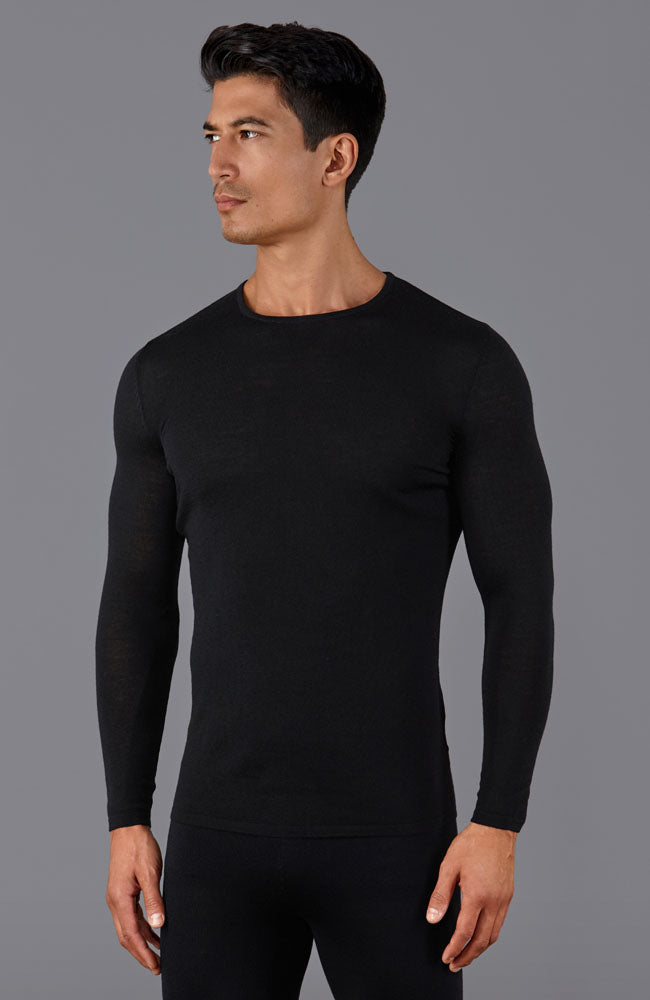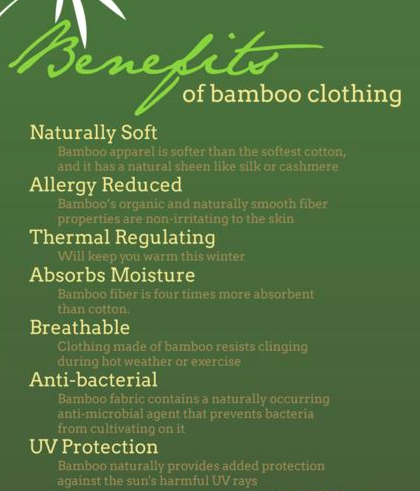Base layers made of yak merino make excellent winter sports clothing because of the mix of benefits and qualities derived both from merino and wool. It's hollow fibres retain air to create a great insulation. When paired with merino wool which has superior properties for insulation, the fabric offers superior warmth and comfort in cold conditions.
Merino wool is able to manage water by wicking it away from your body. Yak wool is water-wicking, and is a perfect match for merino wool. This combo helps maintain body temperature by removing moisture from the skin during intense exercise in cold weather.
Merino is known for being soft and comfortable, with fine fibers which cause less irritation. When woven with the soft, smooth fibers of yak the resultant fabric is comfortable against the skin.
Odor resistance - Both Merino wool and Yak wool, have antimicrobial properties that stop the growth of bacteria that cause odor. This keeps the garment fresher, even if it is used for prolonged periods.
Durability- Yak and Merino are both strong materials. They are combined to make a fabric which can endure the rigors and strains of outdoor and sporting activities.
Temperature Regulation Yak Merino Wool Base Layers are breathable, and they have insulation properties that regulate body temperature. This keeps the wearer warm in cold temperatures but also keeps them warm.
Merino Wool and Yak wool are renewable, biodegradable fibers which makes them eco-friendly choices for winter sportswear.
These attributes provide yak merino based base layers an ideal option for winter sportswear as they offer warmth and comfort, control of moisture and toughness. Follow the best merino wool base layer examples for blog info including wool thermal base layer, first lite merino wool base layer, smartwool thermal underwear, ski layers womens, wool base layer mens, skiing mid layers, smartwool 250, womens icebreaker base layer, base layer moisture wicking, ski underlayers and more.

What Are The Benefits From Bamboo Clothes?
Bamboo clothing is a great choice for those looking to maximize their benefits in terms of thermal regulation as well as UV protection.
Insulation- Bamboo fabric offers warmth in cold weather, while still being air-conditioned. It assists in regulating body's temperature by retaining the heat in cooler temperatures and allows for ventilation to allow overheating to be kept from happening during physical activities.
UV Protection
UV Resistant - The bamboo fabric provides natural protection from harmful UV rays. It is able to block the majority of ultraviolet sunlight's rays. This adds an additional layer of protection when wearing it outside.
Biodegradability-
The bamboo clothing is biodegradable which means it is able to break down naturally at the end of its lifespan without creating harmful residues or contributing to the pollution of the environment. This helps reduce waste and lessens the environmental impact caused by discarded clothes.
Environmental Impact-
Sustainable - Bamboo as a raw material is extremely durable. It is a fast-growing tree that doesn't require pesticides and chemical fertilizers. It's a renewable resource due to of its speedy growth.
Bamboo requires a smaller amount of water compared to other crops such as cotton. It is an efficient water-using crop. This is a major factor in water conservation and helps reduce the strain on resources.
Soil Conservation-
Soil health- Bamboo cultivation doesn't deplete soil nutrients and doesn't require extensive irrigation. This improves soil conditions and lessens the need for harmful practices in agriculture.
Carbon Sequestration
Carbon Absorption Bamboo absorb more carbon dioxide and release oxygen into the air than other plants. This property supports efforts to reduce carbon emissions as well as combat climate change.
Bamboo clothing comes with many benefits that include thermal regulation, UV blocking and biodegradability, as being a positive influence on the environment. This makes it an ideal option for those who want to buy sustainable, functional clothing. These characteristics are in keeping with green practices and bring benefits for both the wearer and the environment. Check out the most popular bamboo clothings blog for blog info including bamboo sweatpants, kyte pajama, bamboo apparel wholesale, bamboo sports clothing, bamboo boxer shorts, bamboo pants womens, rayon from bamboo fabric, bamboo clothing leggings, bamboo activewear, onno bamboo shirts and more.

How Do Merino And Bamboo Compare To Wool In Terms Of Texture, Heat And Moisture Absorption
The most crucial factor to consider when comparing merino clothes to traditional bamboo and wool clothing.
Merino WoolMerino Wool Merino wool is known for its softness and fine fibers, offering an easier and smoother texture when compared to wool that is traditional. It is believed to be more relaxing.
Bamboo ClothingBamboo fabric is silky and smooth and is often compared to luxury materials like silk or cashmere. It is silky and soft, making it comfortable to wear.
Traditional Wool – Traditional wool has many different textures. Some are more coarse than others, and can cause itching, discomfort, or irritation in comparison to clothes made of merino.
Warmth-
Merino Wool- Merino wool is extremely warm due to its insulating properties. Even when damp, it retains warmth and acts as an efficient insulation in frigid weather conditions.
Bamboo Clothing is warm as well, but not as well insulated as merino. It regulates body temperature and provides the comfort you need in all conditions.
Traditional Wool- Much like wool from merino traditional wool is warm and insulation. It is more bulky and heavier than bamboo or merino clothing.
Moisture Absorption-
Merino Wool Merino Wool, due to its outstanding moisture wicking properties is able to draw moisture away from the skin, allowing it to evaporate. Even when wet, the wool remains warm.
Bamboo Clothing - Bamboo fabric will also absorb moisture, providing comfort for active people. It regulates moisture, keeping people dry.
Traditional Wool- Although wool can take in moisture, it may not have the same properties of moisture wicking like bamboo or merino wool fabric. Certain kinds of wool might feel damp and heavy when wet.
In the end, merino Wool is well-known for its softness, warmth and efficient moisture-wicking properties. Bamboo clothing has a silky smooth texture with adequate warmth and moisture regulation. Traditional wool may have a different texture, provide warmth and moisture absorption, however they are more coarse or heavier in comparison to wool or bamboo clothing. Each type of material has distinct properties to cater for different preferences in clothes. Check out the best more hints for blog advice including smartwool classic thermal merino quarter zip base layer top women's, smartwool 1 4 zip womens, smartwool classic thermal merino quarter zip base layer top women's, sweaty betty base layers, smartwool long johns, merino base layer, merino 250 base layer, best ski underlayers, wool thermals womens, smartwool 250 base layer women's and more.
